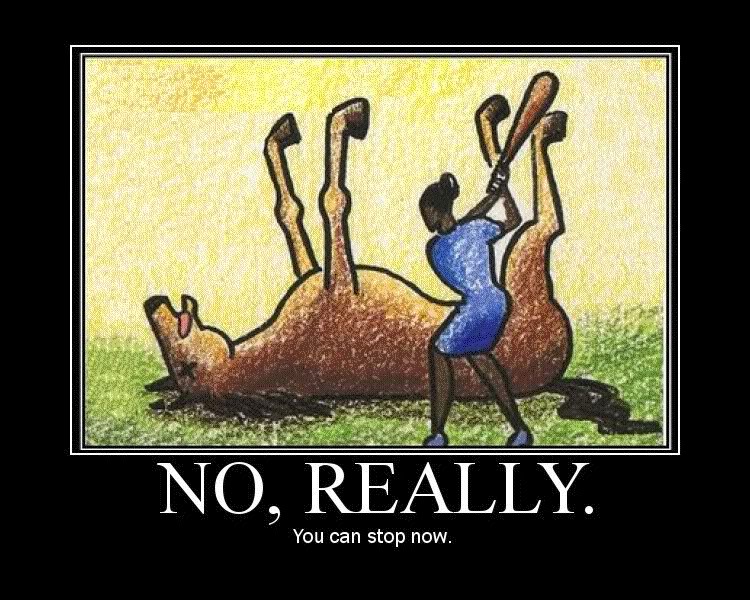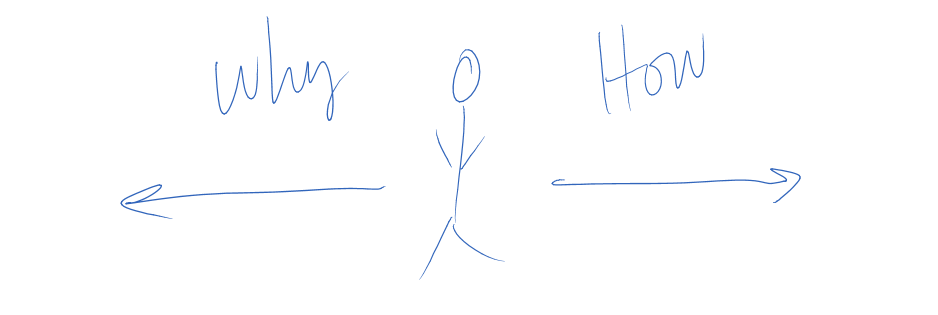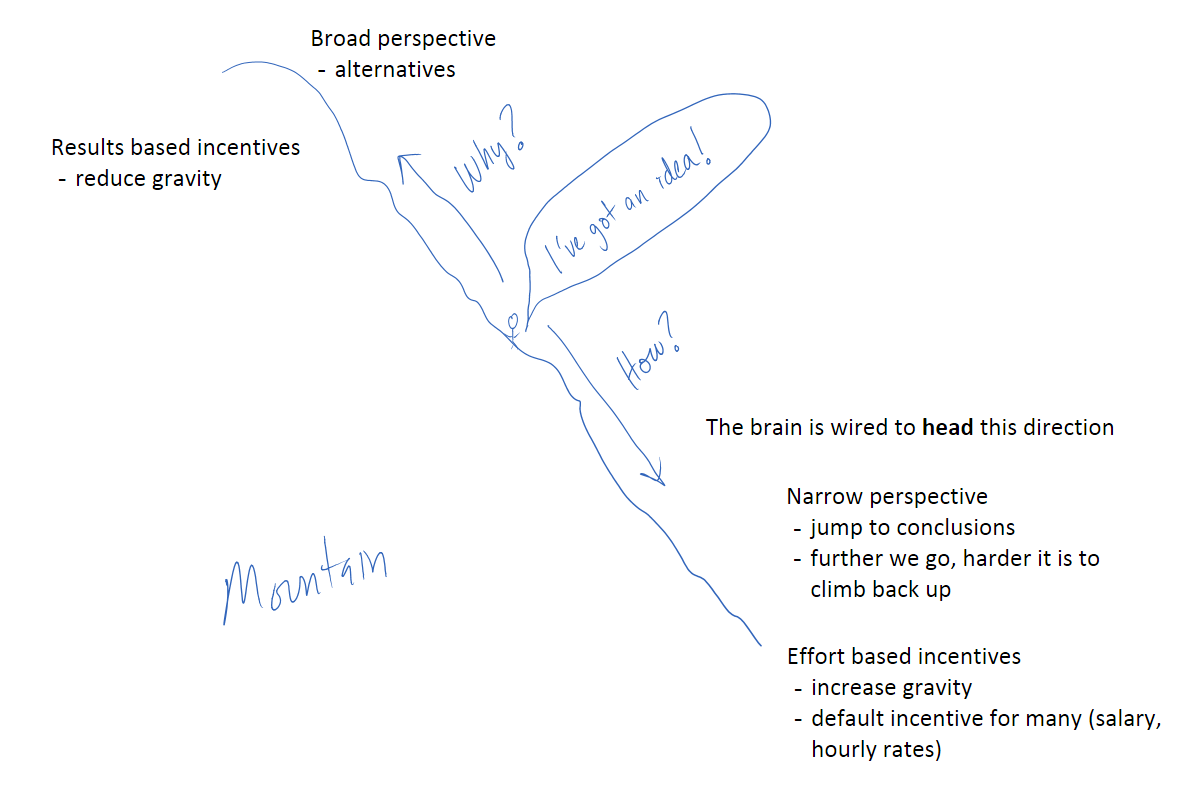I’m constantly in search of analogies to help explain the significance of knowing why something is worthwhile before plowing forward with how to accomplish it. Just when I think I’ve beaten the dead horse a bit too much, I find someone that’s immune to my existing body of analogies.
In my mind I like to think of the interplay of why and how, as taking opposite directions. At the point when someone has an idea, or a request, or a plan, we have two choices about what we do next. We can ask “Why is this a good idea? Why should we proceed?” That’s one direction. Or we could just plow forward with making the idea a reality. In that case we would start out asking “How should we proceed?”
But even this analogy alone doesn’t express the gravity of the dichotomy.
I see this analogy as a person standing still. A two dimensional person.
They can either walk left or right. And if they walk right, assuming right represents how, it’s highly unlikely they’ll ever consider walking left. This represents the sunk cost fallacy that makes it hard for us to question why we’re doing something after we’ve invested in doing it. The more we invest, the harder it is to consider alternatives or stopping altogether. Which can be costly.
Anyways, tonight I tilted the line and I thought of a mountain.
Having an idea is like finding ourselves half way up a mountain. Heading down is easier than heading up. Heading down is akin to asking “How should we proceed?” It’s so much easier than asking why. It’s also much more natural, our brains are wired to head in this direction. We’re problem solvers by default because our subconscious mind likes to jump to conclusions about how to achieve a particular goal. And in the case of an idea, that goal seems to be acting upon the idea.
Asking why is like climbing up the mountain. It’s work. It doesn’t come naturally. It requires engaging the slow, deliberate elements of our mind. But in doing so, we broaden our perspective. Just like climbing a mountain. The higher we climb the better the view. As we climb, we uncover the true nature of what the idea is meant to accomplish. We determine what makes for a worthwhile goal.
The view also affords perspective of alternatives to climbing down the mountain. We might notice the first direction we would’ve taken if we had started out with “How?” would have led us to a cliff.
Once we have the perspective to understand why we should proceed, we can roll down hill in the right direction.
There’s another way this analogy helps understand why asking “Why?” isn’t easy. Not only is it hard work to climb up the mountain, but by default most of us are rewarded for our effort. Employees are salaried, paid for showing up. Contractors are paid by the hour. In both cases we’re paid to apply effort. We’re rewarded for effort. That incentive to apply effort increases the pull of gravity making it even harder to climb uphill.
However, imagine if the incentives worked in the opposite direction. Imagine what happens when we’re rewarded for results instead of effort. If we’re rewarded for results, then knowing why we’re doing something matters more than what we do. So, results based incentives would be like reducing gravity. Climbing up the mountain would be easier. In fact, it’s not hard to imagine that if we could flip the incentives toward results, I might need to redraw the arrows with how pointing up and why pointing down.


